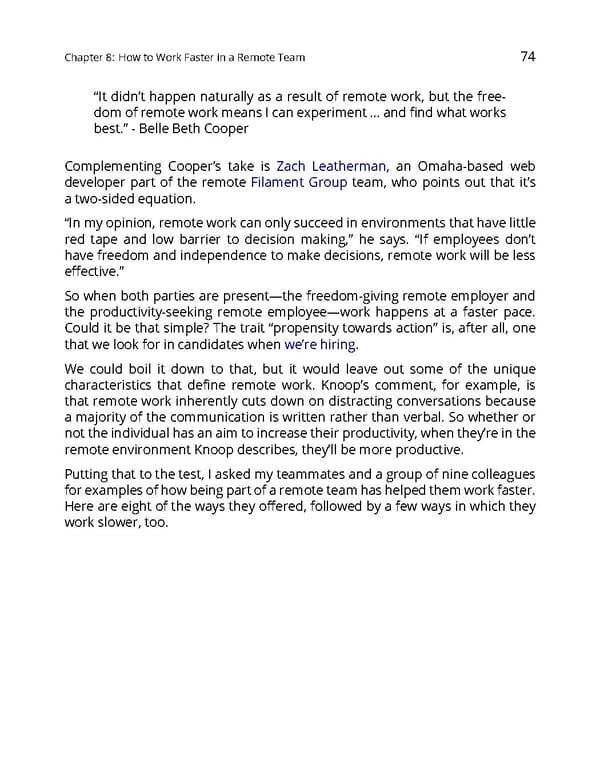Chapter8: HowtoWorkFasterinaRemoteTeam 74 “It didn’t happen naturally as a result of remote work, but the free- domofremoteworkmeansIcanexperiment…andfindwhatworks best.” - Belle Beth Cooper Complementing Cooper’s take is Zach Leatherman, an Omaha-based web developer part of the remote Filament Group team, who points out that it’s atwo-sidedequation. “In my opinion, remote work can only succeed in environments that have little red tape and low barrier to decision making,” he says. “If employees don’t have freedom and independence to make decisions, remote work will be less effective.” So when both parties are present—the freedom-giving remote employer and the productivity-seeking remote employee—work happens at a faster pace. Could it be that simple? The trait “propensity towards action” is, after all, one that we look for in candidates when we’re hiring. We could boil it down to that, but it would leave out some of the unique characteristics that define remote work. Knoop’s comment, for example, is that remote work inherently cuts down on distracting conversations because a majority of the communication is written rather than verbal. So whether or nottheindividualhasanaimtoincreasetheirproductivity,whenthey’reinthe remoteenvironmentKnoopdescribes,they’llbemoreproductive. Putting that to the test, I asked my teammates and a group of nine colleagues forexamplesofhowbeingpartofaremoteteamhashelpedthemworkfaster. Hereareeight of the ways they offered, followed by a few ways in which they workslower,too.
 The Ultimate Guide to Remote Work Page 77 Page 79
The Ultimate Guide to Remote Work Page 77 Page 79